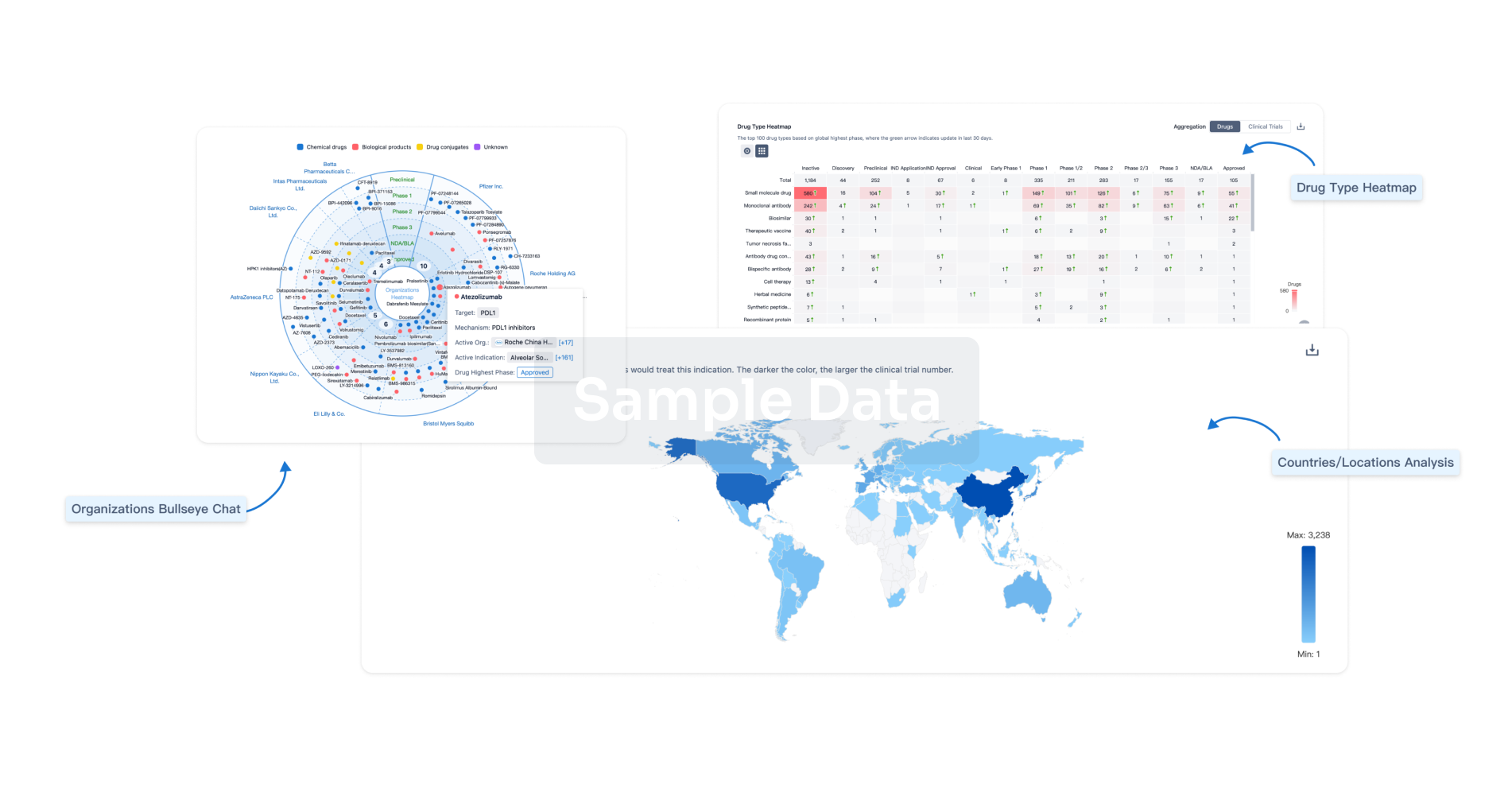Request Demo
Last update 08 May 2025
Hepatic Epithelioid Haemangioendothelioma
Last update 08 May 2025
Basic Info
Synonyms- |
Introduction- |
Related
1
Drugs associated with Hepatic Epithelioid HaemangioendotheliomaTarget |
Mechanism IFNAR agonists [+2] |
Originator Org. |
Active Indication |
Inactive Indication- |
Drug Highest PhaseApproved |
First Approval Ctry. / Loc. China |
First Approval Date28 Jun 2018 |
3
Clinical Trials associated with Hepatic Epithelioid HaemangioendotheliomaCTR20243240
培集成干扰素α2注射液治疗肝上皮样血管内皮瘤的多中心、单臂、随机、开放的Ⅱa期临床研究
[Translation] A multicenter, single-arm, randomized, open-label phase Ⅱa clinical study of interferon α2 injection in the treatment of hepatic epithelioid hemangioendothelioma
主要目的 初步探索培集成干扰素α-2注射液在肝上皮样血管内皮瘤患者的疗效。 探索培集成干扰素α-2注射液治疗肝上皮样血管内皮瘤患者的II期推荐剂量(RP2D)。
次要目的 探索培集成干扰素α-2注射液在肝上皮样血管内皮瘤患者的药代动力学(PK)和药效学特征。 观察培集成干扰素α-2注射液治疗肝上皮样血管内皮瘤患者的安全耐受性。 观察培集成干扰素α-2注射液治疗肝上皮样血管内皮瘤患者的免疫原性。
[Translation]
Primary objective To preliminarily explore the efficacy of peginterferon α-2 injection in patients with hepatic epithelioid hemangioendothelioma. To explore the phase II recommended dose (RP2D) of peginterferon α-2 injection in the treatment of patients with hepatic epithelioid hemangioendothelioma.
Secondary objective To explore the pharmacokinetic (PK) and pharmacodynamic characteristics of peginterferon α-2 injection in patients with hepatic epithelioid hemangioendothelioma. To observe the safety and tolerability of peginterferon α-2 injection in the treatment of patients with hepatic epithelioid hemangioendothelioma. To observe the immunogenicity of peginterferon α-2 injection in the treatment of patients with hepatic epithelioid hemangioendothelioma.
Start Date- |
Sponsor / Collaborator |
NCT06541652
A French Multicenter Observational Retrospective Study of Rare Primary Liver Cancers
The aim of this French multicenter retrospective study is to describ rare primary hepatic cancers clinical, histological and radiological features, to obtain a biological tumor and blood collection, and to evaluate the efficacy of treatments received in clinical practice in order to determine optimal therapeutic sequences. This retrospective cohort will be the backbone of future translational studies aimed at identifying new molecular, histological, circulating and radiological tumor biomarkers, potentially useful at every stage of diagnosis and prognostic or theranostic evaluation.
Start Date26 Mar 2024 |
Sponsor / Collaborator |
ChiCTR2200060969
Treatment of Hepatic Epithelioid Hemangioendothelioma: A single-Institution Experience
Start Date01 Jun 2022 |
Sponsor / Collaborator- |
100 Clinical Results associated with Hepatic Epithelioid Haemangioendothelioma
Login to view more data
100 Translational Medicine associated with Hepatic Epithelioid Haemangioendothelioma
Login to view more data
0 Patents (Medical) associated with Hepatic Epithelioid Haemangioendothelioma
Login to view more data
349
Literatures (Medical) associated with Hepatic Epithelioid Haemangioendothelioma14 Mar 2025·Cureus
Rare Encounter With Hepatic Epithelioid Hemangioendothelioma: A Case Report
Article
Author: Anwar, Sadia ; Mirza, Zeeshan ; Chaudhary, Muhammad Hamid ; Malik, Mariam ; Ahmad, Barira ; Idrees, Rana Bilal
01 Feb 2025·Clinical Transplantation
Outcomes of Liver Transplant for Hepatic Epithelioid Hemangioendothelioma
Article
Author: Larson, Emily L. ; Zhou, Alice L. ; Ciftci, Yusuf ; Ruck, Jessica M. ; Jenkins, Reed T. ; Philosophe, Benjamin
01 Feb 2025·Archivos Argentinos de Pediatria
Liver transplantation for primary liver tumors in pediatrics. A case series
Article
Author: Varela, Mariana ; Fauda, Martín ; Selzer Soria, Erika M ; Lagues, Cecilia ; González Campaña, Ariel ; Malla, Ivone ; Siaba Serrate, Alejandro
Analysis
Perform a panoramic analysis of this field.
login
or

AI Agents Built for Biopharma Breakthroughs
Accelerate discovery. Empower decisions. Transform outcomes.
Get started for free today!
Accelerate Strategic R&D decision making with Synapse, PatSnap’s AI-powered Connected Innovation Intelligence Platform Built for Life Sciences Professionals.
Start your data trial now!
Synapse data is also accessible to external entities via APIs or data packages. Empower better decisions with the latest in pharmaceutical intelligence.
Bio
Bio Sequences Search & Analysis
Sign up for free
Chemical
Chemical Structures Search & Analysis
Sign up for free
